SOEST Press Releases: 2006 Archive
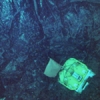 |
November 23 : Scientists Lose Instruments, Gain First Look at Seafloor FormationSeismometers that had been placed on the ocean floor fell silent, so a rapid response cruise was organized by SOEST oceanographer Jim Cowen to investigate their fate. When it was discovered that the seismometers had been trapped in fresh lava flows, it became an opportunity to study the formation of the seafloor. Ken Rubin, and Brian Glazer are also involved in this cruise and study, whose results were shared in the November 23rd edition of Science Express. Read the press release. |
 |
October 27 : Urban Sprawl Linked to Declining Public HealthDr. Jackson, a physician who has specialized in issues related to health and the environment for over 22 years, will be conducting a free public lecture on Thursday, November 2, 2006 at the John A. Burns School of Medicine. He will be taking a comprehensive look at the connection between urban planning, architecture, transportation, community design and public heath and offering timely solutions geared toward our unique island environment. Presented by the University of Hawai‘i Sea Grant College Program Center for Smart Building and Community Design in concert with the University of Hawai‘i Foundation Read the press release. |
 |
October 2 : Salmon Farms Kill Wild SalmonNew research has confirmed that sea lice from salmon farms can have severe impacts on wild salmon. Sea lice are natural parasites of salmon, but sea lice transmission is altered by fish farms, which eliminate a disease refuge for juvenile fish. Up to 95% of wild juvenile salmon killed by parasites from salmon farms. Read the press release. Image courtesy of Alexandra Morton, Raincoast Research Society |
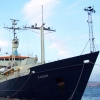 |
September 29 : Manganese can keep toxic hydrogen sulfide zones in check in aquatic systems, researchers report in 'Science'A dissolved form of the mineral Manganese, in trace amounts, is important in waterways such as the Black Sea and Chesapeake Bay, where it can keep toxic hydrogen sulfide zones in check. The results are reported in the Sept. 29 issue of the prestigious journal Science and also are the focus of the journal’s “Perspectives” column, “Geochemistry: Manganese Redox Chemistry Revisited". Read the press release. Image courtesy of University of Delaware |
 |
April 26 : David Karl elected to the National Academy of SciencesThe National Academy of Sciences (NAS) announced the election of 72 new members and 18 foreign associates in recognition of their distinguished and continuing achievements in original research. Included in this list of notables is David M. Karl from the Department of Oceanography. Election to the Academy is considered one of the highest honors that can be accorded a U.S. scientist or engineer. Congratulations on this well deserved recognition David! Image courtesy of David Karl |
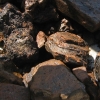 |
March 9 : Streaky Upper Mantle Shows its Stretch MarksScientists from Oregon, Hawaii, and France have found ancient material distributed in 40 km thick streaks in the mantle beneath the Indian Ocean. The study, published in the March 9, 2006 issue of the journal Nature, used isotopes of the elements halfnium (Hf) and Neodymium (Nd) in sea floor volcanic rocks collected from over 3000 km along the mid-ocean ridge to determine the size and number of streaks in the Indian Ocean upper mantle. Read more about it. Image courtesy of SOEST |
 |
January 26 : Maui High School wins Ocean Science Bowl (again!)Maui High School has won the Hawaii Ocean Science Bowl (the Aloha Bowl) for the 4th straight year! The team will represent Hawaii in the national ocean bowl in Pacific Grove, CA in May. Congratulations to Maui, and to all the teams that participated! Read more about it. Image courtesy of SOEST |
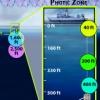 |
January 26 : Sequencing our SeasScientists have sequenced and compared the genomes of planktonic microbes living throughout the water column in the Pacific Ocean. The pioneering study yielded insight into the specialization of microbial communities at each depth--ranging from 40 to more than 13,000 feet. Read more about it. Image courtesy of Nicolle Rager Fuller, National Science Foundation. |
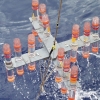 |
January 23 : Global warming could affect ocean plant lifePhytoplankton can be affected by climate change, according to a study in this week's Nature journal. Oceanographer David Karl worked with collegues in the Netherlands to compare climate models to results from Station Aloha. Read more about it. Image courtesy of Hawaii Ocean Time Series Program (HOTS) / SOEST. |
January 20 : Two Manoa Scientists among 15 honored by the National Academy of SciencesThe researchers are two of 15 national scientists to receive awards this year. Klaus Keil (HIGP), Interim Dean of SOEST, has been awarded the J. Lawrence Smith Medal, and Steven Stanley (GG) has been awarded the Mary Clark Thompson Medal, both awards come with a cash prize.. Read more about it. Image courtesy of Bob Chinn, UH University Relations. |
|
News archives: 2015 • 2014 • 2013 • 2012 • 2011 • 2010 • 2009 • 2008 • 2007 • 2006 • 2005 • 2004 • 2003 • 2002Press release archives: 2015 • 2014 • 2012 • 2012 • 2011 • 2010 • 2009 • 2008 • 2007 • 2006 • 2005 • 2004 and earlierIf you have news to share, or would like more information about any of the above, please contact:
Mahalo! (Thank you!)
|
|


